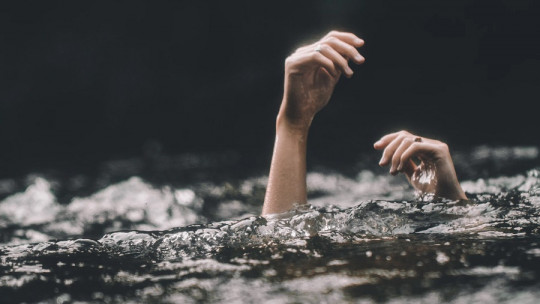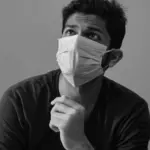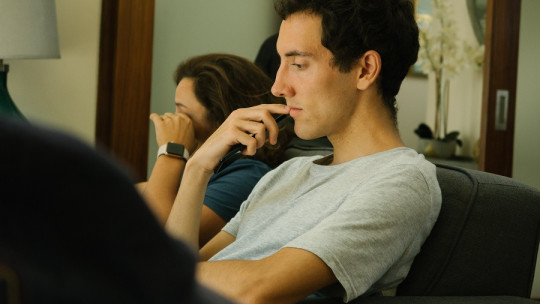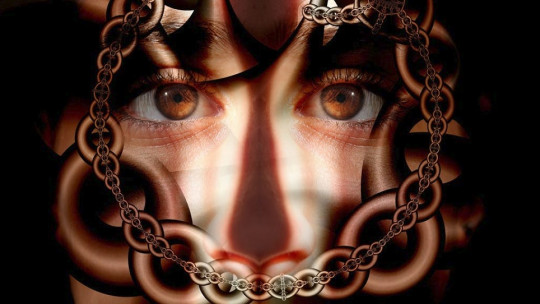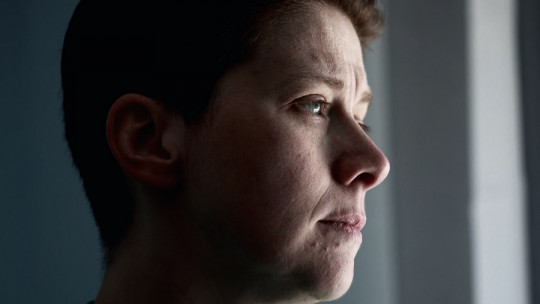
Anxiety is an emotional and adaptive reaction that we have all felt in our lives. For example, in the moments before an exam, after a work conflict or when making an important decision that can affect our lives considerably.
Now, some people experience different anxiety disorders that cause great discomfort.
Questions and answers about anxiety
Sometimes, many people may have erroneous beliefs about this adaptive reaction and the different anxiety disorders that exist.
Therefore, in the following lines We present a series of questions and answers that aim to clarify some doubts that may arise around this phenomenon.
1. What is anxiety?
Anxiety is a natural defense mechanism that appears in response to a threat. It is a system that generates adaptive reactions essential for human beings. Depending on the character and content of the thoughts that the threat awakens, anxiety activates more or less protective systems and manifests itself in a more or less forceful way.
The response generated by anxiety does not depend so much on the type of threat as on the perception we have of it. For this reason, this system is functional when the protection mechanisms it activates are proportional to the danger.
2. What types of anxiety disorders exist?
Although the symptoms of anxiety disorders are often similar, according to the Diagnostic Statistical Manual of Mental Disorders (DSM-V), there are different anxiety disorders. Among them it is possible to highlight: Obsessive Compulsive Disorders (OCD), Specific Phobic Disorders, Agoraphobia, Social Phobia, Post-Traumatic Stress Disorder (PTSD), Panic Attacks, Generalized Anxiety Disorder.
3. What are phobias?
Phobias are a type of anxiety disorder that generally have their origin in a traumatic experience, since a person associates a phobic stimulus with a negative response. People with a phobia feel a great fear of an object, situation and, in other words, a phobic stimulus. This discomfort or anxiety causes the phobic person to tend to avoid this stimulus that causes a reaction of fear or anxiety.
4. What is a panic attack?
The panic attack (or anxiety crisis) is precisely the result of the proliferation of thoughts that warn of danger and that generate fear accompanied, usually, by a feeling of high risk or imminent catastrophe. It begins suddenly and frequently peaks in less than 20 minutes.
The thoughts that lead to this type of episode share a fatalistic nature (“the worst thing that can happen is…”, “everything is a problem”, “Nothing seems like a good option to me”, etc.). All of them usually appear automatically. The person is not very aware of its origin or the level of forcefulness and intrusiveness.
The result is a cocktail of emotions that alerts the individual even more and, as a consequence, triggers the symptoms related to the overactivation of the organism. Respiratory rate and heart rate are the main protagonists.
5. What role does breathing play in a panic attack?
We obtain energy through respiration (the nutrients we acquire through food require oxygen to be transformed into energy).
When we perceive a threat, we accelerate our breathing and, at the moment of inspiration, we use extra muscles to calm our urge to “get air”. All this entails a higher energy cost.
If the feeling of threat does not decrease and the thoughts grow, the respiratory rate increases and is maintained. The result is breathing that is above the needs of our body, excessive breathing that requires a lot of energy. This is what we know as hyperventilation.
6. Why is it so difficult to take in air when we hyperventilate?
When we hyperventilate we load our lungs with O2 and create an imbalance: O2 levels increase but CO2 levels decrease. In order to rebalance the gases, the body makes it difficult for the individual to take in O2. For this reason, in an anxiety crisis the person feels short of breath and has difficulty breathing.
7. And when we play sports, don’t we also speed up our breathing?
Yes. The difference is that, when we do sports, the body needs more energy and we increase the respiratory rate in order to obtain more O2. This oxygen, when used, produces a high amount of CO2. So that, there is no imbalance between the two gases. For this reason, when we play sports, we do not have the same symptoms as when we hyperventilate due to anxiety.
8. Why do some people who have a panic attack feel like they might die?
The acceleration of the respiratory rate and, consequently, of the entire metabolism, leads the individual towards a limit physical state. The imbalance between gases (specifically, the decrease in the level of CO2 in the blood) produces another phenomenon: the alteration of pH.
This alteration in pH is responsible for a whole set of sensations that awaken terror: suffocation, accelerated heart rate, dizziness, tremors, muscle spasms in the legs, trunk, arms and even facial muscles, sweating, heat, etc.
The lack of knowledge about what a panic attack is, added to such visible physical symptoms, leads the person to think that they are dealing with a vascular condition (heart attack for example) and not a problem of psychological origin.
9. What guidelines can help us control a panic attack?
The first essential point is to slow down your breathing. To do this, it is important to try to take air through your nose (to restrict the entry of O2) and expel it through your mouth. As the respiratory rate decreases, inhalations and exhalations become longer (the person begins to feel like they can fill their lungs). Likewise, stopping, stopping talking and looking for a “comfortable” space to rest are three essential elements.
At the same time, breathing visualization techniques work as a distraction method. Coloring the path that the gases take by differentiating the entry of O2 (for example, with the color blue) and the exit of CO2 (for example, with the color red) is a way to focus even more attention on breathing and avoid the appearance of alerts.
10. What type of work is done from Psychotherapy?
Firstly, we carry out a psychoeducational task that reveals the mechanism of anxiety and panic attacks. Understanding the “whys” is the first point to control its appearance.
As we explained, the anxiety crisis is preceded by a whole series of negative thoughts that are more or less automatic and more or less unconscious. From Psychotherapy we carry out work to learn to detect these thoughts, locate them (in what situations), as well as know their essence and content (what is their meaning).
The identification of automatic thinking is what provides the basic knowledge to give power back to the individual. At the same time, the construction of new lines of thought that contemplate untried solutions and facilitate conflict resolution will be the training that expands the range of resources and increases your management capacity.
11. What types of psychotherapy are useful for the treatment of anxiety?
One of the most used therapies for the treatment of anxiety disorders is cognitive behavioral therapy, which has been shown to be very effective in many researches. It works especially well for the treatment of phobic disorders such as claustrophobia. Furthermore, in recent times, third generation therapies such as Mindfulness or Acceptance and Commitment Therapy have proven to be very effective.
12. Is it good to take drugs to treat anxiety?
Some drugs are indicated for the treatment of anxiety in severe cases; however, should not be taken as the only therapeutic option, but in combination with psychotherapy. Furthermore, anxiolytics or antidepressants should never be taken without the supervision of a specialist.
13. How do I stop taking anxiety medications?
Many people can stop taking anxiety medications or antidepressants without noticing withdrawal symptoms, especially if they do so under the supervision of a health professional. Other people, however, may experience some uncomfortable withdrawal symptoms. If you experience any symptoms that interfere with your ability to perform daily activities, You should talk to your doctor, psychiatrist or psychologist and explain your case.


